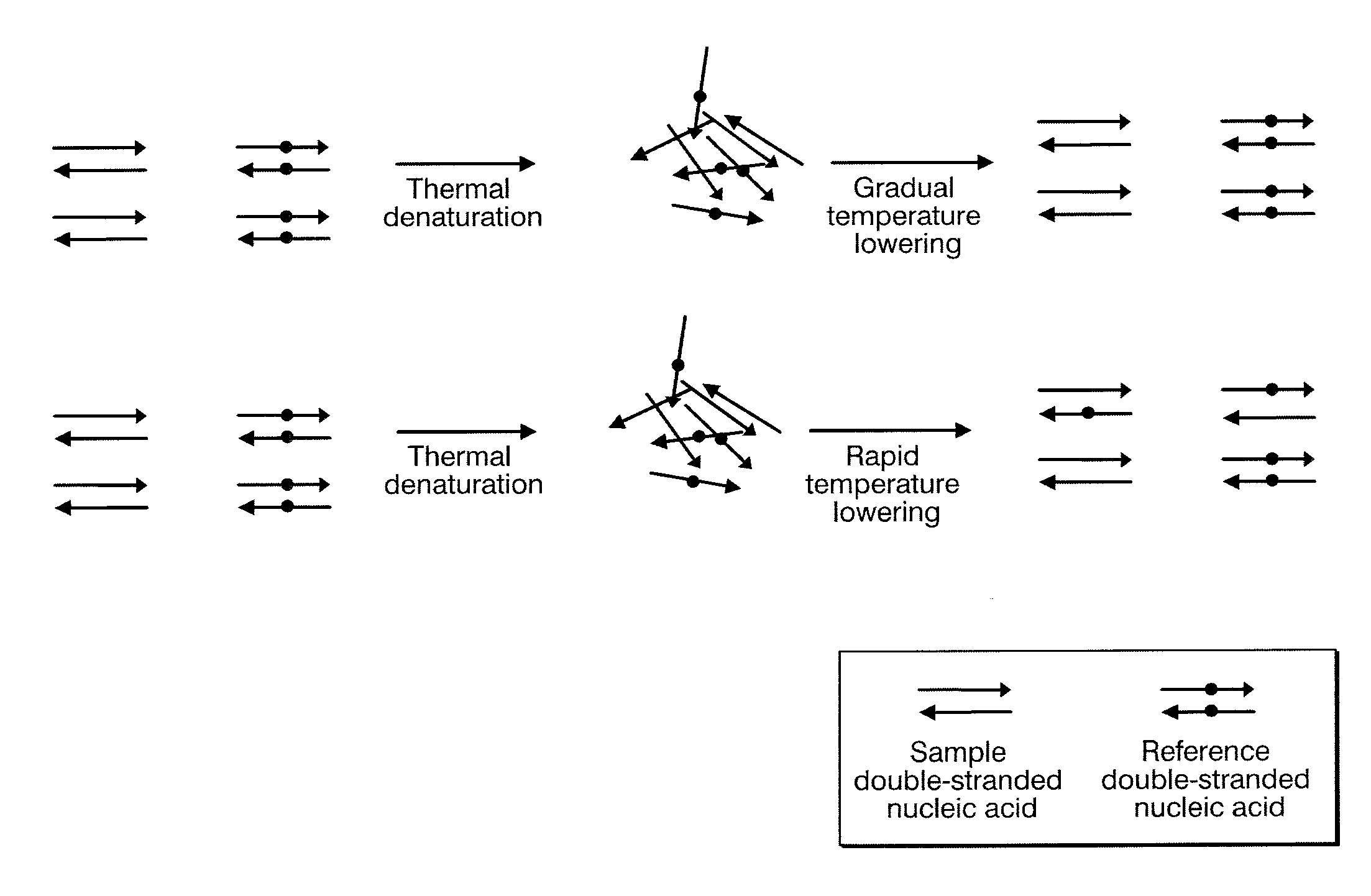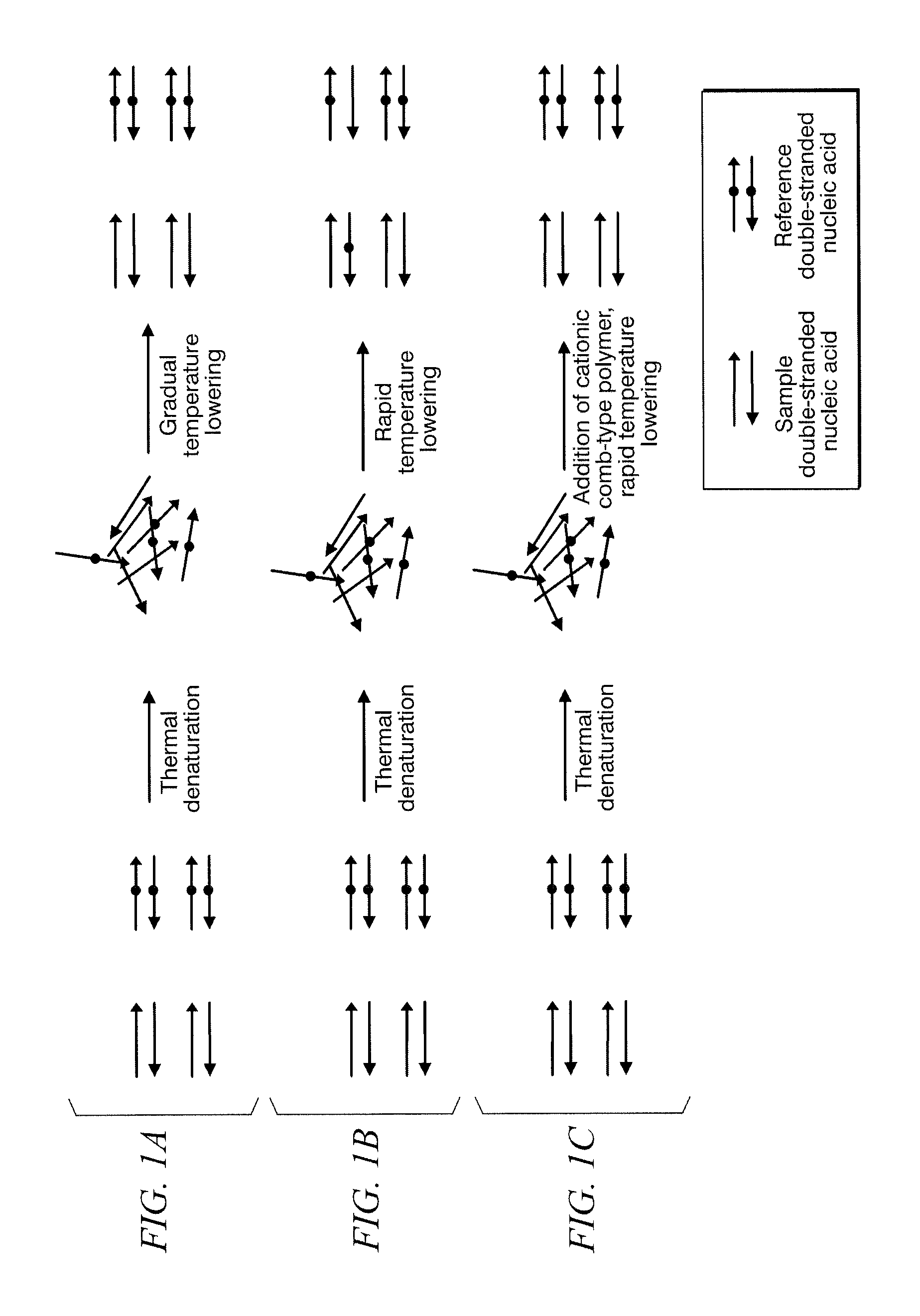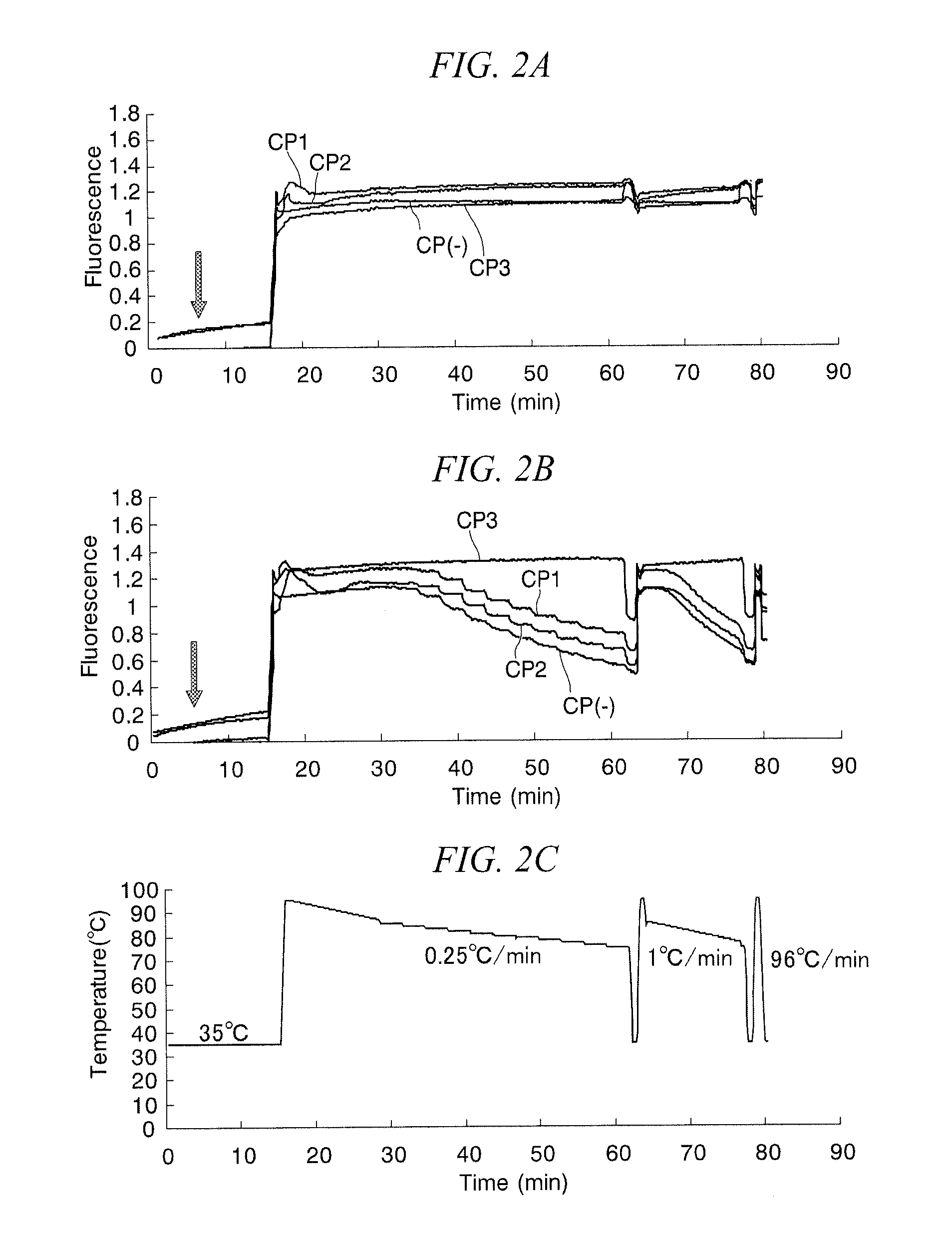Method for identifying target base sequence
- Summary
- Abstract
- Description
- Claims
- Application Information
AI Technical Summary
Benefits of technology
Problems solved by technology
Method used
Image
Examples
example 1
[0105]Using a gene mutation at codon 12 of the cancer gene KRAS for the mutation site targeted for identification, and using the base sequence of a partial region containing the mutation site for the target base sequence, the identification method of the present invention was used to identify whether or not the genotype of a sample double-stranded nucleic acid is identical to the genotype of the reference double-stranded nucleic acid. Furthermore, the reference double-stranded nucleic acid and sample double-stranded nucleic acid used were prepared in accordance with ordinary chemical synthesis methods.
[0106]First, reference double-stranded nucleic acids of the codon 12 wild type (Wild) and a mutant type (G12S) were respectively prepared. The mutant type (G12S) is a mutant type in which glycine has been altered to serine due to a point mutation of codon 12. Both ends of one of the nucleic acid strands of each reference double-stranded nucleic acid were labeled with FAM (Glen Research...
example 2
[0120]Wild-type KRAS codon 12 (Wild) and a mutant type (G12S) were identified using the identification method of the present invention in the same manner as Example 1 using sample double-stranded nucleic acid prepared by PCR. Polymer CP2, which demonstrated the greatest effect in Example 1, was used for the cationic comb-type polymer.
[0121]The composition of the PCR reaction solution consisted of 250 nM KF primer, 250 nM KR primer, 250 μM dNTP, 1×PCR buffer and 2.5 units of Taq DNA polymerase (Takara Taq HotStart Version), and the total volume of the reaction solution was made to be 47.5 μL, 2.5 μL of template DNA having a concentration of 10 ng / μL were added to this PCR reaction solution to bring to a total reaction solution volume of 50 PCR reaction conditions consisted of treating for 3 minutes at 95° C. followed by carrying out 40 cycles consisting of denaturation, annealing and extension reactions comprising 95° C. for 20 seconds, 57° C. for 30 seconds and 72° C. for 30 seconds...
example 3
[0126]An SNP said to be involved in alcohol metabolism of a gene (ALDH2) that encodes alcohol dehydrogenase was identified and detected using the identification method of the present invention. Polymer CP2, which demonstrated the greatest effect in Example 1, was used for the cationic comb-type polymer.
[0127]Reference double-stranded nucleic acids having genotypes of the A and G alleles for the SNP site were respectively prepared by ordinary chemical synthesis. The 5′ end of the one of the nucleic acid strands of the reference double-stranded nucleic acid used to detect the A genotype was labeled with FAM (Glen Research Corp.) and the 3′ end of the other nucleic acid strand was labeled with DABCYL (Glen Research Corp.). On the other hand, the 5′ end of one of the nucleic acid strands of the reference double-stranded nucleic acid for detecting the G genotype was labeled with Alexa 594 (Glen Research Corp.) and the 3′ end of the other nucleic acid strand was labeled with DABCYL (Glen ...
PUM
| Property | Measurement | Unit |
|---|---|---|
| Temperature | aaaaa | aaaaa |
| Length | aaaaa | aaaaa |
| Molecular weight | aaaaa | aaaaa |
Abstract
Description
Claims
Application Information
 Login to View More
Login to View More - R&D
- Intellectual Property
- Life Sciences
- Materials
- Tech Scout
- Unparalleled Data Quality
- Higher Quality Content
- 60% Fewer Hallucinations
Browse by: Latest US Patents, China's latest patents, Technical Efficacy Thesaurus, Application Domain, Technology Topic, Popular Technical Reports.
© 2025 PatSnap. All rights reserved.Legal|Privacy policy|Modern Slavery Act Transparency Statement|Sitemap|About US| Contact US: help@patsnap.com



